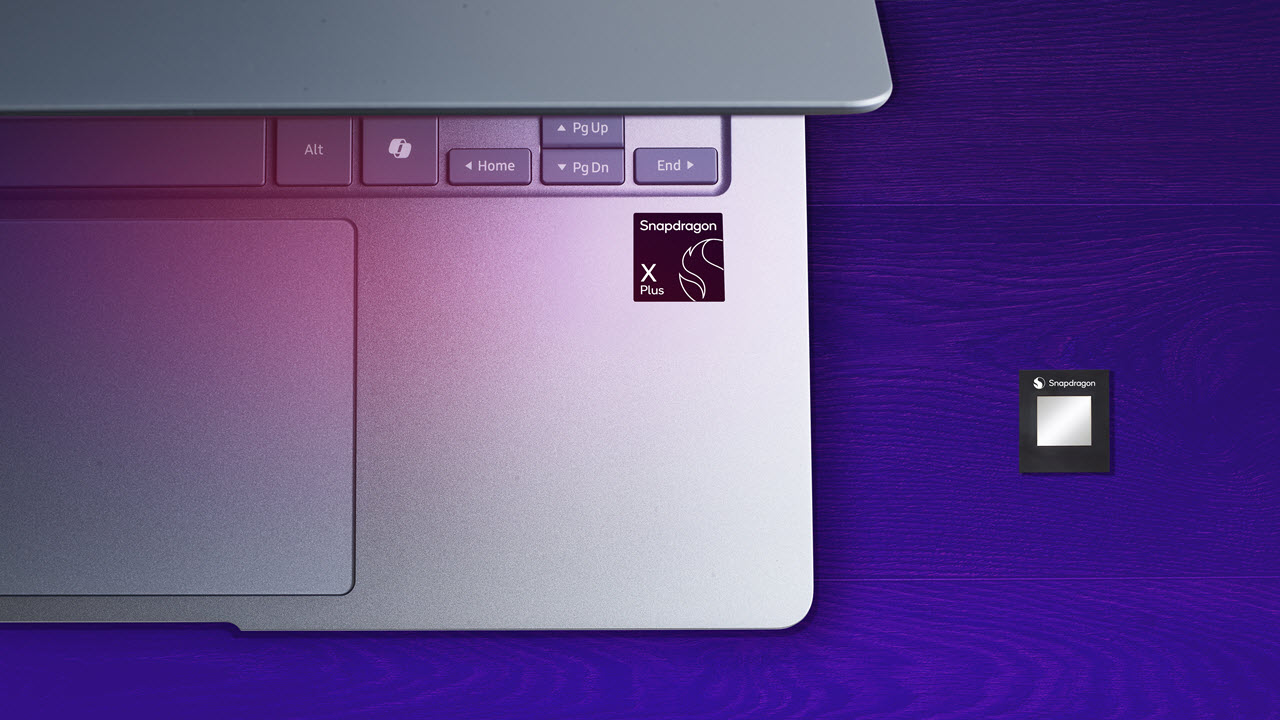Intel's co-CEO claims retailers say Qualcomm-powered PCs have high return rates, points to new competitors with Arm chips coming in 2025
But Arm will still get a larger chunk of the market, according to Intel.

Michelle Johnston Holthaus, an interim co-CEO of Intel, claims that a large percentage of Qualcomm-powered machines are being returned to retailers. Johnston Holthaus claims that the returns are the retailers' number one concern.
"I mean, if you look at the return rate for Arm PCs, you go talk to any retailer, their number one concern is 'I get a large percentage of these back,' because you go to set them up and the things that we just expect do not work, right," said Johnston Holthaus at the Barclays 22nd Annual Global Technology Conference.
In Q3, Qualcomm Snapdragon X Elite-powered machines commanded a mere 0.8% of the PC market. Overall, Arm-based client PCs command roughly 10% of the market, with the vast majority being Apple systems featuring M-series processors.
Qualcomm believes that in a few years, about 50% of client PCs will use processors based on the Arm instruction set architecture, which would be a major change for the industry. But for now, Snapdragon X Elite-powered systems have teething problems with compatibility, and according to Intel, a large percentage of these systems are being returned to retailers.
Nonetheless, Intel takes competition from Arm seriously. The slow adoption of Snapdragon systems results from multiple factors, including software compatibility issues, low gaming performance, and rather strong offerings from AMD and Intel. Compatibility issues are, of course, thought to be the primary reason why people return Snapdragon X-based systems to retailers.
This is going to change in the coming years once Microsoft as well as its partners among independent software vendors (ISVs) and independent hardware vendors (IHVs) solve compatibility issues and the number of companies offering Arm-based processors for PCs increases.
"Apple did a lot of that heavy lifting for Arm to make that ubiquitous with their OS and their whole walled garden stack," said Johnston Holthaus. "So, I am not going to say Arm will get more, I am sure, than it gets today, but there are certainly some real barriers to getting there. […] "We [will] have more competitors than we have ever had, you will see more competitors enter the marketplace in 2025."
Get Tom's Hardware's best news and in-depth reviews, straight to your inbox.
The latter claim possibly refers to rumors about MediaTek and Nvidia entering the market with Arm system-on-chips for client PCs running Windows in 2025. Both MediaTek and Nvidia are larger competitors than Intel had in the 1980s, 1990s, and early 2000s, so the competition against these companies will be considerably more intense.
Intel doesn't seem to be afraid of competition on the consumer side of the market. On the one hand, it has vast manufacturing capacities that can almost guarantee its dominance, and it also plans to keep tailoring its designs to better compete against Arm-based rivals in terms of power consumption and performance efficiency. Intel's ability to adapt will be another barrier for new entrants into the client PC space.
"I think another barrier is we took too long at Intel to become performance and power-oriented, and we made a massive leap with our Lunar Lake product last year," said the interim co-CEO. "We are as performant on performance and battery life as most Arm devices out there."
Although PC makers could benefit from increased competition on the market by getting better pricing, they also value long-term relationships with Intel and their experience with x86 processors, so once Intel can address certain design goals, PC makers might just prefer the proven partner.
"As for our customers, a lot of them are saying, 'Okay, you are finally in the ballpark of being focused on all these right things, therefore, I believe I can bet on the x86 architecture'," said Johnston Holthaus. "[…] Our customers have decades of relationships with Intel, and those do not go away overnight. I have seen customers lean in. I have seen customers change their roadmap."

Anton Shilov is a contributing writer at Tom’s Hardware. Over the past couple of decades, he has covered everything from CPUs and GPUs to supercomputers and from modern process technologies and latest fab tools to high-tech industry trends.
-
jg.millirem As Tom’s writers love to say, take Intel’s statements with a huge grain of salt. Of COURSE they’re going to blather about the rosiness of their own prospects.Reply -
ezst036 Qualcomm probably knows it has to take a "loss-leader" attitude in this.Reply
ARM-based programs will not just magically appear. Adobe will port to ARM Windows because enough people own ARM Windows. Autodesk will port to ARM Windows because enough people own ARM Windows.
The existence of the Mac based on M1/2/3/* actually helps with this as mentioned in the article, because half the battle will already be complete, the port to ARM without Windows. Qualcomm has to just get it out there however and in whatever way they can get it out there since Microsoft desperately wants ARM and is already doing much of the heavy lifting there.
That's why Intel does take the competition seriously. ARM's already got a built in 20% of the market (Apple's command) which sets the stage. What Intel is doing by focusing on the high retail return rate, which is most surely accurate, is putting out FUD.
It's propaganda. All wars involve propaganda, even Sun Tzu wrote about it.(wasn't called that at the time) -
bit_user Reply
Lunar Lake represents a local maximum, I think - not a new trend line. Intel jumped to TSMC N3B. We have yet to see how 18A will compare on efficiency, but you have to consider that Snapdragon X is on TSMC N4P, like AMD. Also, Intel has said it won't be using on-package DRAM in Panther Lake, which eliminates another efficiency advantage of Lunar Lake's.The article said:... it also plans to keep tailoring its designs to better compete against Arm-based rivals in terms of power consumption and performance efficiency. ...
"I think another barrier is we took too long at Intel to become performance and power-oriented, and we made a massive leap with our Lunar Lake product last year," said the interim co-CEO. "We are as performant on performance and battery life as most Arm devices out there."
So, I simply don't believe Intel has effectively nullified the efficiency advantages of ARM. Lunar Lake got some tactical victories, but that's mostly all they are.
I will say that Intel's embrace of hybrid architectures was unquestionably a good move, from the perspective of battery life. Without that, they might be dead in the water. -
ryanshultz Intel comes close to Snapdragon's battery time only because they severely throttle down performance when off the plug. That's not matching they're efficiency. Who wants a machine that drops performance to save battery life?Reply
And Intel's giant production advantage goes out the door when they have to use TSMC to produce their chips.
False claims of high rates of product return reek of desperation and a company struggling to keep their head above the water. Sad days for a once great tech company. But it's time to move forward. They just can't match the performance and efficiency of Snapdragon. -
Eximo Certainly priced to sell right now. But I can imagine someone taking one home and then finding out some incompatibility that is a deal breaker.Reply -
DS426 Are there any retailers going on record to say this? I can't find anything using a traditional search engine search nor AI-driven search. This is bold for a CEO to say if it's not publicly-verifyable information.Reply -
Klmip Reply
Apple has 9% global laptop market share for two reasons. First, are all the class action lawsuits for poor build quality. Second, are the 20th features at 21th century prices.ezst036 said:Qualcomm probably knows it has to take a "loss-leader" attitude in this.
ARM-based programs will not just magically appear. Adobe will port to ARM Windows because enough people own ARM Windows. Autodesk will port to ARM Windows because enough people own ARM Windows.
The existence of the Mac based on M1/2/3/* actually helps with this as mentioned in the article, because half the battle will already be complete, the port to ARM without Windows. Qualcomm has to just get it out there however and in whatever way they can get it out there since Microsoft desperately wants ARM and is already doing much of the heavy lifting there.
That's why Intel does take the competition seriously. ARM's already got a built in 20% of the market (Apple's command) which sets the stage. What Intel is doing by focusing on the high retail return rate, which is most surely accurate, is putting out FUD.
It's propaganda. All wars involve propaganda, even Sun Tzu wrote about it.(wasn't called that at the time) -
RUSerious Weird. Why bash other companies when your own company is the one that needs to be fixed. I guess, if all fails, distract.Reply -
shady28 ReplyEximo said:Certainly priced to sell right now. But I can imagine someone taking one home and then finding out some incompatibility that is a deal breaker.
That's exactly what happens.
"But it said it was Windows."
"Yes, but it's running an ARM processor."
"So I need a special processor to run my software?"
"No, you need an x86 processor."
"What's an x86 processor?"
"Intel or AMD"
"So this thing is junk? Why would you even sell garbage like this?" -
EzzyB Reply
When I think of this I always think back to the ARM supercomputer built by Fujitsu. Once built, and for a couple of years, it was the most powerful computer in the world. But, when you broke it down, per unit of work it was actually about 5% less efficient than comparable x86 based supercomputers.bit_user said:
So, I simply don't believe Intel has effectively nullified the efficiency advantages of ARM. Lunar Lake got some tactical victories, but that's mostly all they are.
That at least points out to me that the whole ARM is more efficient thing just may not scale as well as many think it will.
I think ARM's immediate problem is getting in the corporate door. I'm sure IT pros here will back me up and say that if you're looking to make a major corporate purchase to update, say, 1000 laptops, you are still very, very wary of them. Will they run your software? Even those weird programs every organization seems to have that were programmed by some dude named Phil in 2003? So, taking this from a purely consumer standpoint that buys one laptop is probably not the best way to look at how one thinks about adoption of ARM in the Windows space. Corporate IT has always dwarfed the sales of individuals and until they are on board it's going to be a steep hill to climb for Windows ARM computers.